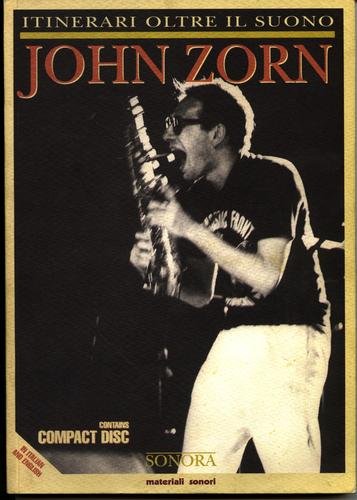Les affiches de Mai 68, ou, L’imagination graphique (1982)
Filed under catalogue | Tags: · 1968, art, graffiti, protest

A catalogue of seventy posters from May 1968 made by art and non-art students from across France using stencil, lithography, linoleum and offset printing. Collected for an exhibition held in the Salle Mortreuil of the Bibliothèque nationale, February-March 1982.
Edited and with an Introduction (in French) by Charles Perussaux
Publisher Bibliothèque nationale, Paris, 1982
ISBN 2717716254
84 pages
Commentary (Michael Seidman, 2004, pp 130-145)
PDF (via Gallica.fr), Alternative scan
View online (at Gallica.fr)
Sonora: John Zorn (1998) [English/Italian]
Filed under book | Tags: · film, jazz, music, music criticism, theatre

This special issue of the digest size Italian magazine Sonora: Itinerari oltre il suono on composer John Zorn includes interviews, articles by and about him, photo and score sections, and listings of his recorded works up to 1998. The volume came with a CD compiled by Eugene Chadbourne.
Edited by Walter Rovere and Carla Chiti
Publisher Materiali Sonori, 1998
144 pages
Book via filboid
CD via El estupor se hizo mármol
PDF (26 MB, no OCR)
Eugene Chadbourne & John Zorn – 1977-1981 (Audio CD, ZIP’d MP3s, 58 MB)
Martin Puchner: Poetry of the Revolution: Marx, Manifestos, and the Avant-Gardes (2005)
Filed under book | Tags: · aesthetics, art, art history, avant-garde, communism, dada, futurism, literature, marxism, politics, revolution, situationists, surrealism, theatre

“Poetry of the Revolution tells the story of political and artistic upheavals through the manifestos of the nineteenth and twentieth centuries. Ranging from the Communist Manifesto to the manifestos of the 1960s and beyond, it highlights the varied alliances and rivalries between socialism and repeated waves of avant-garde art. Martin Puchner argues that the manifesto–what Marx called the ‘poetry’ of the revolution–was the genre through which modern culture articulated its revolutionary ambitions and desires. When it intruded into the sphere of art, the manifesto created an art in its own image: shrill and aggressive, political and polemical. The result was “manifesto art”–combinations of manifesto and art that fundamentally transformed the artistic landscape of the twentieth century.
Central to modern politics and art, the manifesto also measures the geography of modernity. The translations, editions, and adaptations of such texts as the Communist Manifesto and the Futurist Manifesto registered and advanced the spread of revolutionary modernity and of avant-garde movements across Europe and to the Americas. The rapid diffusion of these manifestos was made “possible by networks–such as the successive socialist internationals and international avant-garde movements–that connected Santiago and Zurich, Moscow and New York, London and Mexico City. Poetry of the Revolution thus provides the point of departure for a truly global analysis of modernism and modernity.”
Publisher Princeton University Press, 2005
Translation/Transnation series
ISBN 1400844126, 9781400844128
336 pages
via delery
Reviews: Gregory Byala (Bryn Mawr Review of Comparative Literature), Randy Martin (The Drama Review), Matthew Rebhorn (Modern Drama), Laura A. Winkiel (Modernism/Modernity), Gavin Grindon (Papers of Surrealism).
PDF (16 MB, updated on 2017-6-18)
See also the entry on Marxist aesthetics on Monoskop wiki.
Comment (0)
